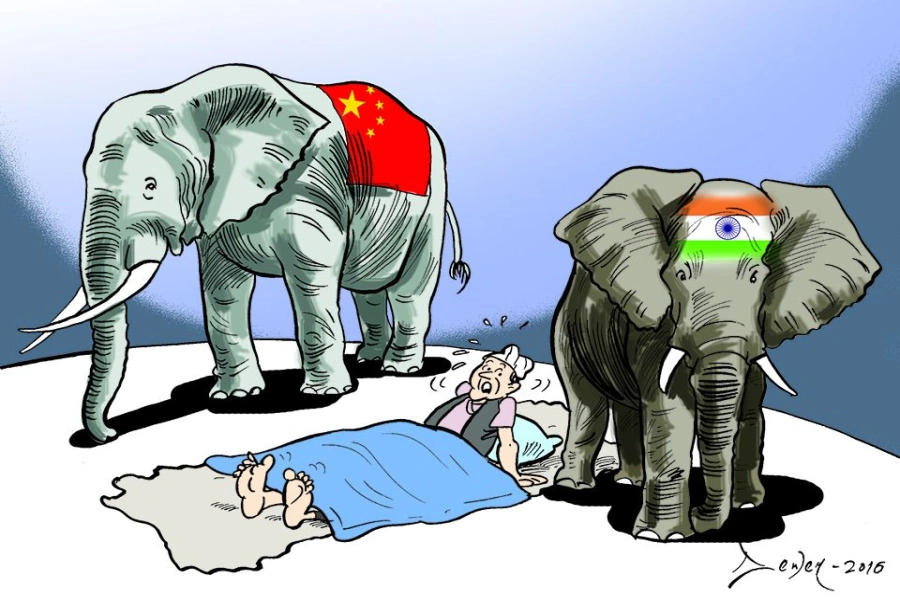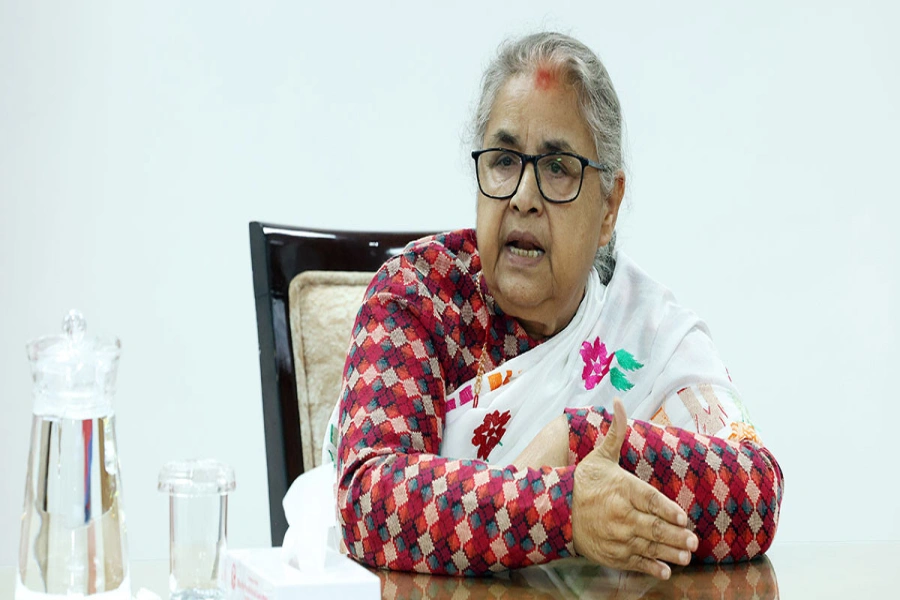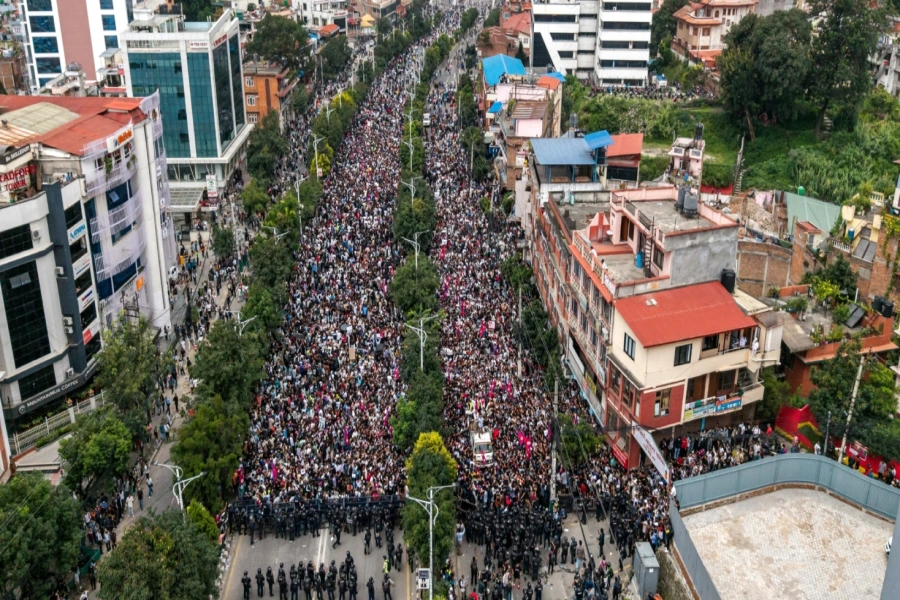With the CBI taking Arun Chaudhary, a renowned businessman, and Ajit N. S. Thapa, the then chairman of Bansbari Leather and Shoe Factory (BLSF), into custody related to usurping 10 ropanies of government land belonging to the BLSF, there are lots of mis-information and dis-information campaign going on, particularly, in the social media either to defend the CBI action or to defame Chaudhary.
The private sector business organizations like the Federation of Nepalese Chambers of Commerce and Industries (FNCCI), the Confederation of Nepalese Industries (CNI) and Nepal Chamber of Commerce (NCC) have openly protested against the CBI action accusing the police of making an attempt to defame the private sector business community which is already struggling for their survival because of the economic downturn. It is totally absurd to see them relating the issue with the much-hyped upcoming investment summit. Meanwhile, some social activists have praised the CBI action and the government headed by Pushpa Kamal Dahal for opening up the closet of the Panchayat days. However, the facts speak differently.
First, let me extract here a page from my PhD thesis submitted to the University of Birmingham, UK, in the early 1990s. The para will speak a lot about the situation and the condition of BLSF in the early days.
“BLSF was established in 1965 with the assistance of China. The objective of BLSF is to collect and process hides, produce leather and leather products and shoes for domestic and foreign markets. Since its inception the production capacity of BLSF has increased from 100 pairs of shoes and the processing of 1000 sq ft of raw (blue) hides per day to 400 pairs of shoes and 4000 sq ft of blue hides per day. It has a program to increase its capacity to 600 pairs of shoes per day and 6000 sq ft of processed leather. The authorized capital has increased from Rs 10 million to Rs 40 million and the paid-up capital from Rs 7.31 million to Rs 30.82 million in 1990.
Government announces to reclaim Bansbari Leather and Shoe Facto...

BSLF had to face intense competition in the shoe market from a dozen private sector shoe manufacturers established within the country and from cheap synthetic shoes imported from abroad. BLSF also has a public sector market to supply about 25,000 pairs of shoes per year to the army and police in the country. It exports semi-processed leather to third countries. BLSF caters to about 20 percent of the country's demand for shoes and 40 percent of the supply of shoe laces and leather to the small-scale cobblers in the country.
For a long time BLSF has remained a sick industry. The production and sale of its products have virtually remained stagnant. A study report on marketing management of BLSF indicated BLSF having as much as 45 percent of its output in stock. There is virtually no concern for advertising. The advertisement expenses were as low as .04 percent of the total cost. With its obsolete machinery and equipment, over-staffing and high debt and accumulated interest burden, BLSF had little scope for commercial viability. The accumulated loan and interest alone has soared up to Rs 25 million. Since its establishment, BLSF has the highest record of turnover for CEOs. For the last 28 years 15 general managers have headed BLSF.
On November 9, 1992, the government sold BLSF to the Leather-Age India Co, excluding land and buildings, at the value of Rs 22.4 million.”
In the mid 1990s, being a close observer and an academic in the field of public enterprises, I was invited, first, by an NGO to do an impact study on privatization in Nepal and, later, by ILO for doing a social impact study of privatization in Nepal that included BLSF. The materials are documented elsewhere. Here are some of the facts that needs to be checked:
1. BLSF was not a glorified public sector industry as being projected in the (social) media. It was, definitely, a sick industry. As mentioned in the quoted para, it had a captive market of supplying shoes to the police and the army. In fact, it had some respite when it was managed by a retired army general. Sorry, I cannot recall his name. However, with the implied “purchase commissions” no public sector organizations were interested in buying shoes from a public sector company. During my university days, Late Prof Ram Prasad Rajbahak was famous for churning out classroom humor and satire. One such anecdotal joke included blaming “Newars of the Kathmandu Valley for their cuisine habit of eating buffalo meat with the skin thereby creating shortages of input raw materials to BLSF. I have found more insidious anecdotes than this one. The elites, the posh neighborhood that came up in that area, due to increased urbanization, wanted to get rid of the “smelly BLSF” from their residential area. Hence it was the first target of the privatization program. Who knows, maybe because of complications involved with land issues, the BLSF privatization program was spared from selling off land?
2. It is not just the hospital, the post privatization of BSLF also provided job opportunities to individual and family shoe makers that thrived inside the dark and damp ‘gallies’ of Kathmandu. In fact, one of the implicit objectives of BLSF was to raise the economic as well as social status of the shoe-makers - something similar to the Chinese government establishing Hetauda Textile Industry in Makwanpur district. In my next issue, I will take up the Hetauda Textile Industry as the Nepalese Army is reported to be taking interest in reviving the defunct industry.
3. Decision to diversify BLSF (swapping land for shares) into Champion Footwear was done during the Panchayat days. This was done much ahead of the Nepali Congress government opting for an aggressive privatization policy. Currently, some sections of the society are squarely determined to defame the multi-party system and the Nepali Congress Party for on-going ills of the government without delving into the history of BLSF.
4. The issues like whether a Board of Public Enterprise is authorized to transfer land to a public company, that too, during the Panchayat days or whether a public company (Champion Footwear) can be converted to a private company and then to a school or the Financial Comptroller General authorized to sell the shares of BLSF to a private party with a holding interest are matters to be resolved retroactively by the judiciary. There is a Nepali saying, “laharo tanda paharo jala”. This can be like pulling a small string from a wool ball. Already there is news that the CBI is investigating land transfer of Harisiddhi Bricks and Tile Factory, Bhrikuti Paper Mills and some other public institutions. How about compensating the farmers of Kirtipur for confiscating their lands for establishing Tribhuvan University? What about Sajha selling its Birgunj land to Nepal Telecom to ply green buses in Kathmandu? What about army HQ at Tundikhel? Are we in the world where the government can do anything to confiscate land from private parties and sell it to any public institutions and companies but the private party cannot do the same?


























-1200x560-1765267769.webp)









